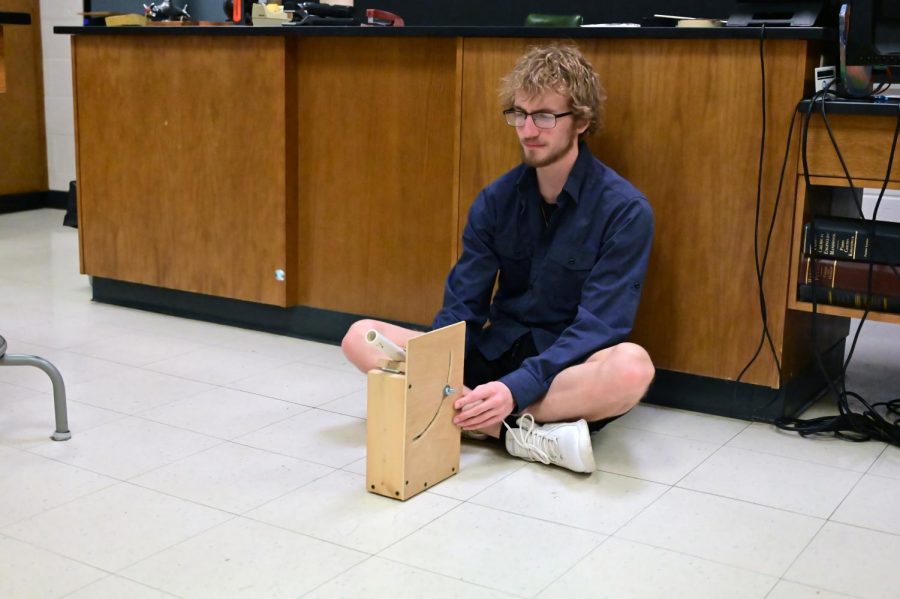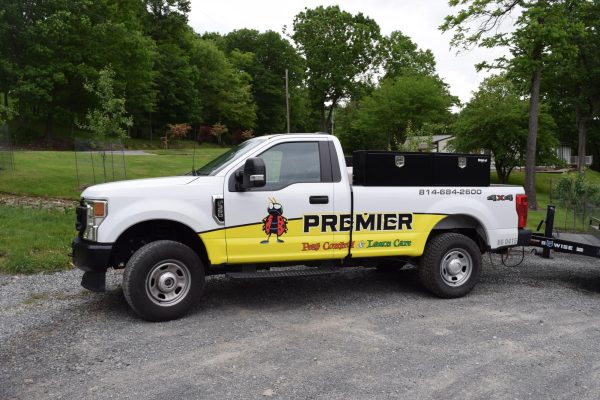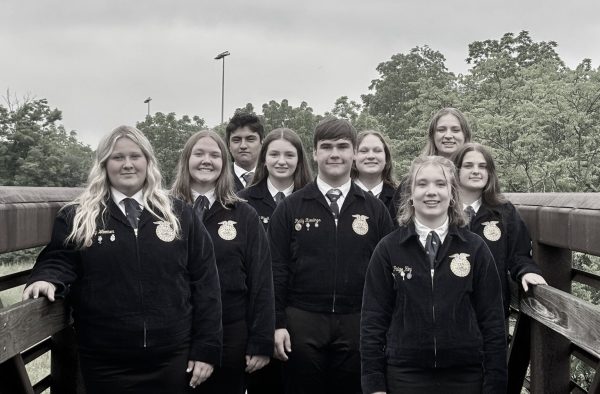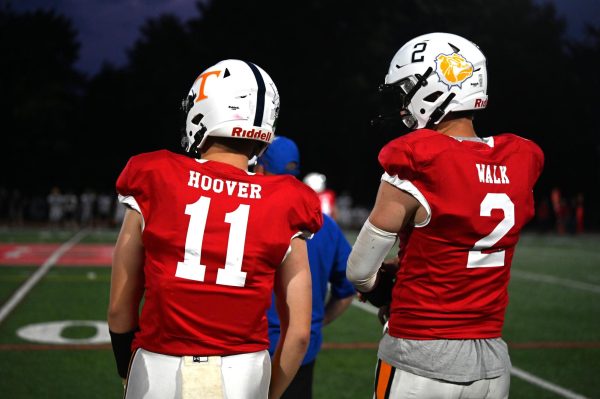Marble Launch Battle Tests Understanding of Physics Concepts
Students would ordinarily get in trouble for launching projectiles across the classroom, but in Tyrone physics teacher Bryan Gruber’s class, it wasn’t just allowed, it was required – all in the name of science.
Students in Gruber’s physics class used marble launchers as part of a lab on projectile motion and how to measure and predict the path of an object traveling on a parabola.
“Projectile motion occurs when an airborne object follows a parabolic path. The path is parabolic because gravity acts constantly downward on it,” said Gruber.
Gruber is well known for his hands-on physics labs like this one, as well as others such as model car races and the well-known cardboard and duct tape boat race in the Tyrone High School swimming pool at the end of the year.
In this lab, students measured the range of marbles launched from a series of different angles.
Once the angles were measured, students plotted the data on a spreadsheet, calculating the average range per angle and they then created an equation based on these numbers.
The data was plugged into Desmos, an online graphing calculator, and students were able to see the parabolic relationship between the angle the launcher shoots to the distance the marble would travel, thus completing one of the objectives.
The launchers were originally used as part of a different lab, but the idea for this one came after a conversation with a former student who was using Desmos for another application.
“I knew the graph [of the path of the marble] would be a parabola but then [I saw former student]] Michael Buck was using Desmos to graph a math problem. I asked him to show me what Desmos could do with the equation we got for our launcher. We put in the equations and discovered that we could use Desmos to find the angle we had to set the launcher to hit a target at a known distance,” said Gruber.
Gruber then gave the class a few ideas and they came up with the idea of using the marble launchers to have a mortar battle between his two physics classes, with the most accurate team being named the winner.
So after each of his two physics classes completed their calculations, Gruber organized a battle between the two classes using the marble launchers.
The objective of each team was to get the marble to land close enough to the opposing class’s launchers to take them out. The most accurate class with the most direct hits wins.
“It was a cool way for both classes to do something together. The best part was having my smaller class beat the larger one,” said physics student Jake Greene.
Labs like this one are fun and designed to show students the practical applications of physics, but Gruber is concerned that too many students interested in the sciences are skipping physics, but the concepts learned in physics are important in many fields of study.
Current physics student and senior Rory Quigley thinks more students should consider taking physics.
“All the labs we do are very creative and fun,” said Quigley, “and the concepts can be applied to many practical applications.”

Hello, this is Ashlynn! She is a senior and this is her third and final year in Eagle Eye. She is very involved in her school community; she is an officer...












